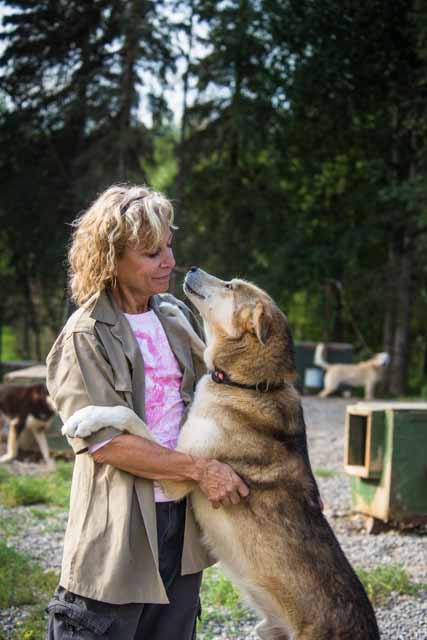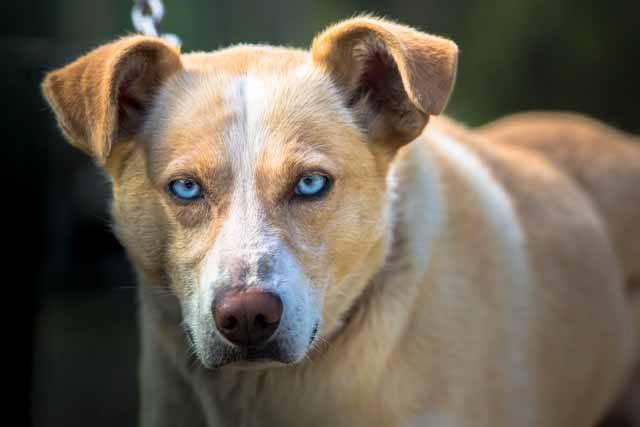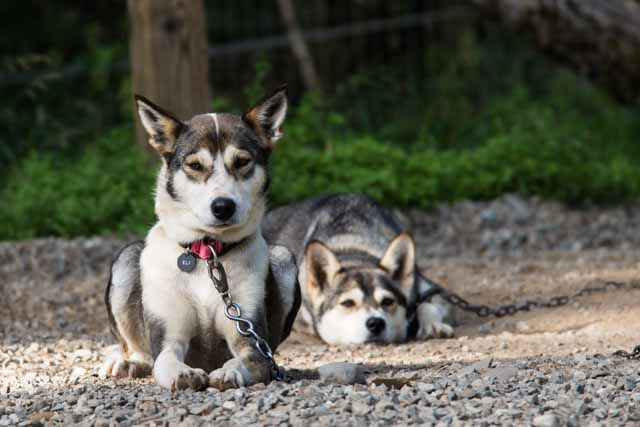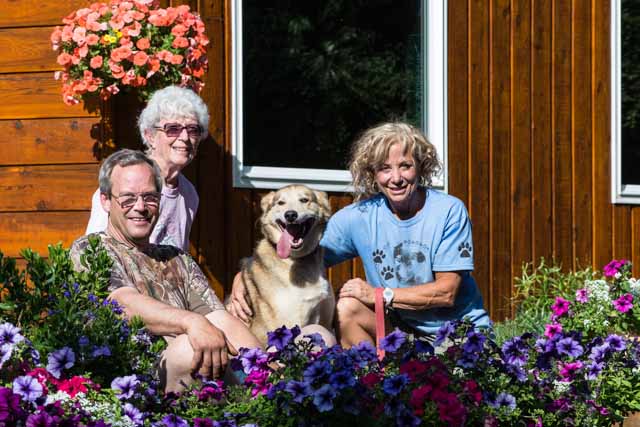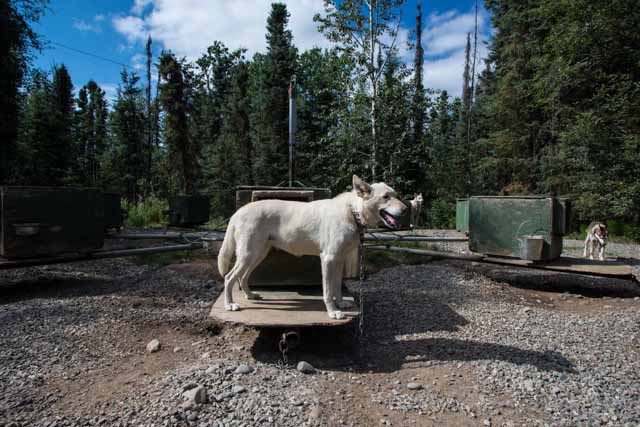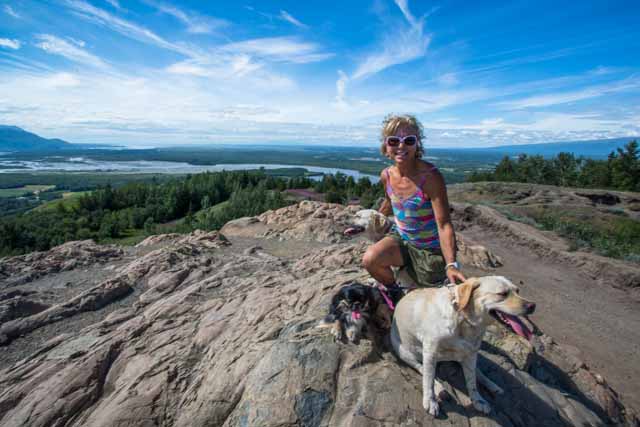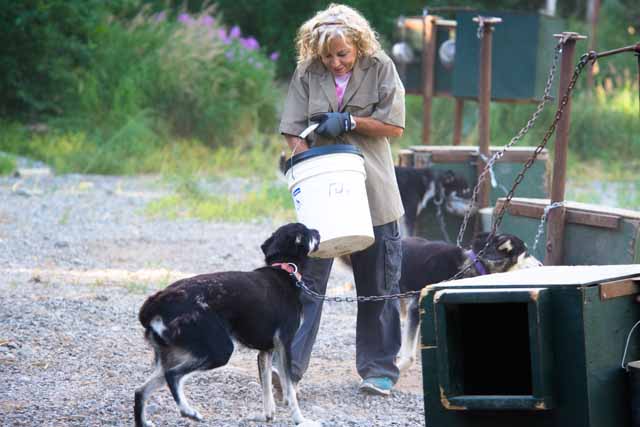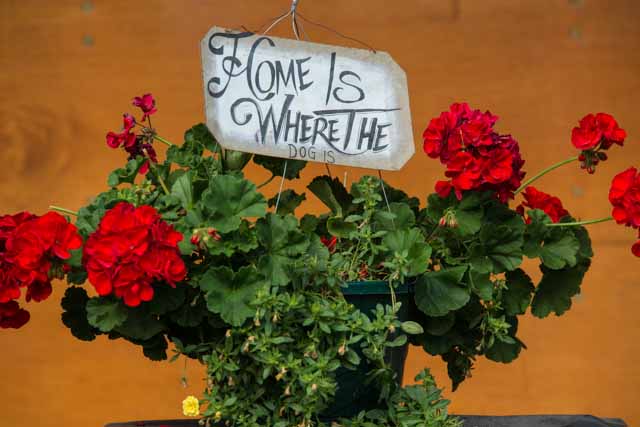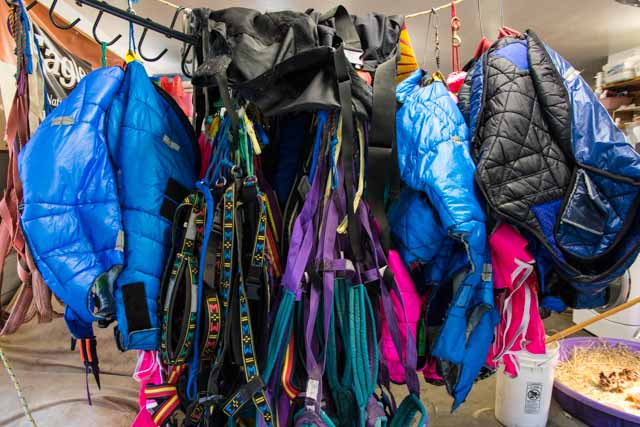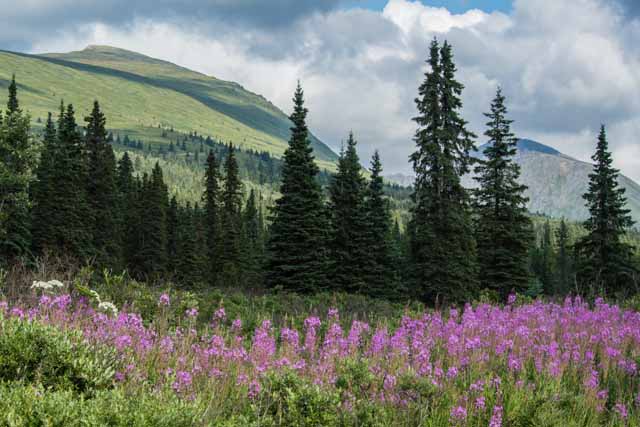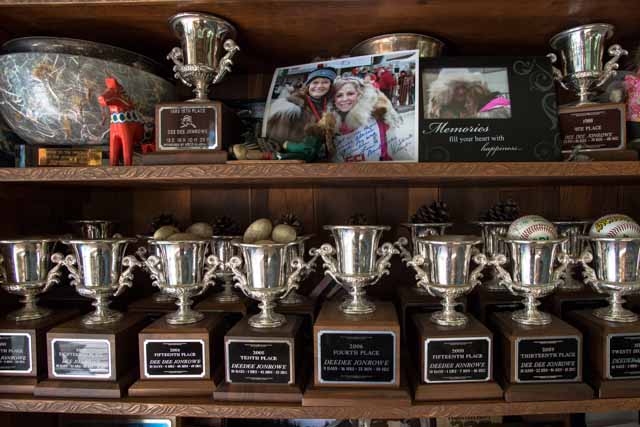World's Toughest Musher, DeeDee Jonrowe - Homestead Magazine
ON THE MORNING of Aug. 1, 2013, Iditarod legend DeeDee Jonrowe peeked into a wooden doghouse fenced off among some trees on her property in Willow, Alaska. Inside was Challon, a husky that Jonrowe had recently bred to an athletic male dog named Jarvi. Nearby, tethered to their own houses, more than three dozen other dogs made a symphony of howls.
A day earlier, Challon had nudged away her kibble, exhibiting a classic sign that she was ready to release her pups. By the time Jonrowe reached the pen, five pups had squiggled out of the womb and onto the hay beside their mother.
Five was a fine litter size, but Challon wasn’t done. Another body emerged, and then another, until finally the puppies totaled nine. This was already no ordinary group.
“It’s going to be my next race team,” Jonrowe said, her voice sparkling.
Five foot three, sixty years old, and a bundle of muscle, Jonrowe is one of the toughest female athletes in the world. She’s not an Olympian or part of any celebrated sports team. Instead, she’s among an elite group of competitors in one of the world’s most grueling races, one that requires marvelous stamina and cunning, and perhaps a little madness: the Iditarod, a sled dog race run every March across 1,000 miles of Alaska’s frozen interior from Anchorage to Nome.
If some people in the mainstream don’t recognize Jonrowe, millions of Iditarod fans do. In 31 races, she’s had 16 top ten finishes and placed second twice. Her pink logo wear is a staple in Iditarod gift shops. Fans know her bright voice from media interviews. “Was that DeeDee?” a hiker asked one day after watching Jonrowe and her two yellow labs charge up the Butte Trail in the Mat-Su Valley. “Tell her that I love her!”
They love her not only for her charm and verve, but also for the way she’s endured some difficult battles.
The Iditarod has a ceremonial start in Anchorage, where fans packsidelines and “Iditariders” (who win at auction with a $7,500 starting bid) ride for 11 miles on mushers’ sleds. The official start is the next afternoon 70-miles north in Willow.
After traversing snow-covered mountains, riveting gorges, and sections of crunched up sea ice, it finishes on the Seward Peninsula in the town of Nome. It links villages of Alaska’s interior that just a few generations ago saw few if any motor vehicles at all during winter. Back then, dogs were critical to survival. Residents raised them for transportation and hunting. Mushers were local heroes, driving dog teams through winter landscapes to deliver medicines, mail, and even preachers. The Iditarod was established in 1973 to honor that tradition.
Only a few Iditarod mushers have become legendary, and Jonrowe is one of them.
Challon is the key.
A mantra among mushers is that the real race athletes are the animals. “It’s not about the mushers,” they say. “It’s about the dogs.”
The sled dogs are fed with meat and fish plus high-calorie, high protein kibble containing amino acids, probiotics and minerals. On the Iditarod trail, the dogs can run up to 100 miles a day, burning 7,000calories per day. They can eat 2,400 pounds of food, all of it dragged in bags and fed to them by the musher. They are rested and inspected by veterinarians at mandatory checkpoints every 18 to 85 miles.
To build a winning team, mushers breed their dogs to have competitive traits, including endurance, speed, a smooth gait, an insulating but not-too-heavy coat, and tough paws. Some, like Jonrowe’s dogs Fudge and Omnistar, become ultra-intelligent team leaders. Others are middle-of-the-pack pullers. Others, still, are wheel dogs running closest to the sled, which can carry more than 100 pounds of gear. Gouda is a favorite wheel dog. In a race, “she’s directing my sled,” Jonrowe explained. “She plays the back line like a piano wire. She’ll jump over, and have both dogs pulling the sled away from the obstacles.”
The performance qualities come only with practice, training and good health. Managing that is much more than a full-time job; it’s a lifestyle.
Touring Jonrowe’s 17 acre property, it’s clear the yard is planned for efficiency: tethers keep dogs from tangling with each other; wide corridors allow for poop cleanup and snow shoveling; and the houses, made by Jonrowe’s husband, Mike, slide up and down on poles so they can be raised and lowered with the snow level.
“Any one year we might win or we might have a bad year,” she said, “but we’re taking care of the dogs 365 days a year. We’re living with them and their little idiosyncrasies. We’re providing for them.”
The bonds that develop between dog and musher make all the difference in the race. The team tries to navigate and avoid many disasters on the trail, from tipping over the sled to getting a dehydrating flu that can spread among participants. One particular day remains strong in Jonrowe’s memory, and marked a turning point for her. Near the end of the 2002 race, crossing the sea ice to the town of Golovin, she felt strangely weak.
“Walking the dogs across the bay, I was stumbling and falling,” she said. “The dogs would come along up around me. I was sure I was going to die out there that night.” At the check point in Golovin, she drank several liters of fluid to stem her dehydration.
A few months later, she learned she had breast cancer, a disease her mother, Peg Stout, had beaten a few years earlier. But cancer couldn’t chase the Iditarod out of her. The next year, three weeks after finishing chemotherapy, she raced to Nome in 18th place.
And that’s where the second key to Jonrowe’s success comes into play: an ability to focus and recover even when things get impossibly bad.
On the Iditarod, quitting the race because you’re tired is not an option. “Somebody has to risk their life to come get you if you quit,” Jonrowe said. “To just quit takes an extreme situation.”
In 1999, she had that extreme, and it was threatening her dogs. “I had bad storms and leadership issues,” she said. “I was 90 miles either direction from anything. I couldn’t walk in front of the dogs to take them in safely anywhere. I made camp for them, and the storm raged and raged.”
Eventually, she signaled for rescue from a bush pilot. “That was one of my lowest points in racing,” she said. “I took all those dogs safely off the river, and two years later we made a top ten finish. We regained their confidence and mine. Sometimes the steepest learning curve is in failure.”
But her most persistent stronghold is in her spiritual faith.
“I like the adrenaline of the edge,” she explained. “People talk about faith being a crutch, but faith is my parachute. I can jump off the edge because I’ve got faith. Whether that’s a good idea or not,” she laughed, “that’s how I live my life, and it’s worked real well.”
Jonrowe’s kitchen is a few steps from the yard where her top competitors live. Someday some of Challon’s pups might be there, too. Like she does most early mornings, the musher watched the dogs through a window, observing them closely for injury as they stretched and took their waking steps.
“Our concept is to know our dogs well,” she said. “All year I’m learning about their potentials, their comfort zones and their talents.”
When feeding time arrived, some of the keenest four-legged athletes in the world howled, leaping up on hind legs in order to touch their keeper.
Jonrowe called out to them brightly. “Good morning, Merlot! Hello Gouda!”
After the dogs chewed and drank, they settled down with eyes closed. “Look at them,” Jonrowe said. “They’re so happy, happy, happy. As (Iditarod champion) Martin Buser says, when you provide for everything they need, they’re content. They’re saying ‘We’re warm, we’re fed, we’re watered….’”
“But then,” she added, “a sound might wake them, and they perk up. They say, ‘There might something happening! There might be something…’.”
All Photos Copyright Laura Read
